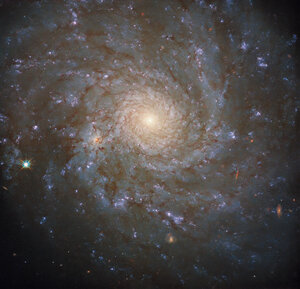Accept all cookies Accept only essential cookies See our Cookie Notice

About ESA
The European Space Agency (ESA) is Europe’s gateway to space. Its mission is to shape the development of Europe’s space capability and ensure that investment in space continues to deliver benefits to the citizens of Europe and the world.
Highlights
ESA - United space in Europe
This is ESA ESA facts Member States & Cooperating States Funding Director General Top management For Member State Delegations European vision European Space Policy ESA & EU Space Councils Responsibility & Sustainability Annual Report Calendar of meetings Corporate newsEstablishments & sites
ESA Headquarters ESA ESTEC ESA ESOC ESA ESRIN ESA EAC ESA ESAC Europe's Spaceport ESA ESEC ESA ECSAT Brussels Office Washington OfficeWorking with ESA
Business with ESA ESA Commercialisation Gateway Law at ESA Careers Cyber resilience at ESA IT at ESA Newsroom Partnerships Merchandising Licence Education Open Space Innovation Platform Integrity and Reporting Administrative Tribunal Health and SafetyMore about ESA
History ESA Historical Archives Exhibitions Publications Art & Culture ESA Merchandise Kids Diversity ESA Brand Centre ESA ChampionsLatest
Space in Member States
Find out more about space activities in our 23 Member States, and understand how ESA works together with their national agencies, institutions and organisations.
Science & Exploration
Exploring our Solar System and unlocking the secrets of the Universe
Go to topicAstronauts
Missions
Juice Euclid Webb Solar Orbiter BepiColombo Gaia ExoMars Cheops Exoplanet missions More missionsActivities
International Space Station Orion service module Gateway Concordia Caves & Pangaea BenefitsLatest
Space Safety
Protecting life and infrastructure on Earth and in orbit
Go to topicAsteroids
Asteroids and Planetary Defence Asteroid danger explained Flyeye telescope: asteroid detection Hera mission: asteroid deflection Near-Earth Object Coordination CentreSpace junk
About space debris Space debris by the numbers Space Environment Report In space refuelling, refurbishing and removingSafety from space
Clean Space ecodesign Zero Debris Technologies Space for Earth Supporting Sustainable DevelopmentLatest
Applications
Using space to benefit citizens and meet future challenges on Earth
Go to topicObserving the Earth
Observing the Earth Future EO Copernicus Meteorology Space for our climate Satellite missionsCommercialisation
ESA Commercialisation Gateway Open Space Innovation Platform Business Incubation ESA Space SolutionsLatest
Enabling & Support
Making space accessible and developing the technologies for the future
Go to topicBuilding missions
Space Engineering and Technology Test centre Laboratories Concurrent Design Facility Preparing for the future Shaping the Future Discovery and Preparation Advanced Concepts TeamSpace transportation
Space Transportation Ariane Vega Space Rider Future space transportation Boost! Europe's Spaceport Launches from Europe's Spaceport from 2012Latest

Stellar cradle
Thank you for liking
You have already liked this page, you can only like it once!
The protostellar object OH 339.88-1.26, which lies 8 900 light-years from Earth in the constellation Ara, lurks in this dust-filled image from the NASA/ESA Hubble Space Telescope. Winding lanes of dark dust thread through this image, which is also studded with bright stars crowned with criss-crossing diffraction spikes.
The dark vertical streak at the centre of this image hides OH 339.88-1.26, which is an astrophysical maser. A maser — which is an acronym for “microwave amplification by stimulated emission of radiation” — is essentially a laser that produces coherent light at microwave wavelengths. Such objects can occur naturally in astrophysical situations, in environments ranging from the north pole of Jupiter to star-forming regions such as the one pictured here.
This image comes from a set of Hubble observations that peer into the hearts of regions where massive stars are born to constrain the nature of massive protostars and test theories of their formation. Astronomers turned to Hubble’s Wide Field Camera 3 to explore five intermediate-mass protostars at infrared wavelengths. The Hubble observations were supported by other state-of-the-art observatories including ALMA, the Atacama Large Millimeter/submillimeter Array. ALMA is composed of 66 moveable high-precision antennas which can be arranged over distances of up to 16 kilometres on a plateau perched high in the Chilean Andes. Further data were contributed by the Stratospheric Observatory For Infrared Astronomy (SOFIA), which is a telescope that — until recently — operated out of a converted 747 aircraft.
[Image Description: The field is field with hundreds of bright stars. They are primarily blue in colour, with scattered smaller stars visible in yellow/orange. The background is dominated by cloudy grey dust, with permeating regions of dark black and orange.]
-
CREDIT
ESA/Hubble & NASA, J. Tan; CC BY 4.0 -
LICENCE
CC BY 4.0 INT or ESA Standard Licence
(content can be used under either licence)

Seeing eye to eye

The many faces of HH 30 (Webb, Hubble & ALMA)

Hubble spies a stunning spiral

Hubble discovers hydrogen-burning white dwarfs enjoy…















 Germany
Germany
 Austria
Austria
 Belgium
Belgium
 Denmark
Denmark
 Spain
Spain
 Estonia
Estonia
 Finland
Finland
 France
France
 Greece
Greece
 Hungary
Hungary
 Ireland
Ireland
 Italy
Italy
 Luxembourg
Luxembourg
 Norway
Norway
 The Netherlands
The Netherlands
 Poland
Poland
 Portugal
Portugal
 Czechia
Czechia
 Romania
Romania
 United Kingdom
United Kingdom
 Slovenia
Slovenia
 Sweden
Sweden
 Switzerland
Switzerland
























